Entries Tagged as 'RU-486'
April 29th, 2008 · Comments Off on The Cultural Controversy of RU-486 in the US
|What is RU-486? | The Discovery | The Chemistry |
|The Global Use | RU-486 in US Politics |
| Cultural Controversy in the US | References |
In favor RU-486:
-
Supports see the drug as “safe and easy” which allows for “an at-home, do-it-yourself, private abortion” (Grant, 1991, p. 23).

-
Those who have taken the drug report it as being “gentle, safe and […] less traumatic […than surgical abortions as…] there is no intrusion on the integrity of the body” (Lader, 1991, p. 53).
- Many see RU-486 as free from the aggressive nature of surgery and in this way, almost natural.
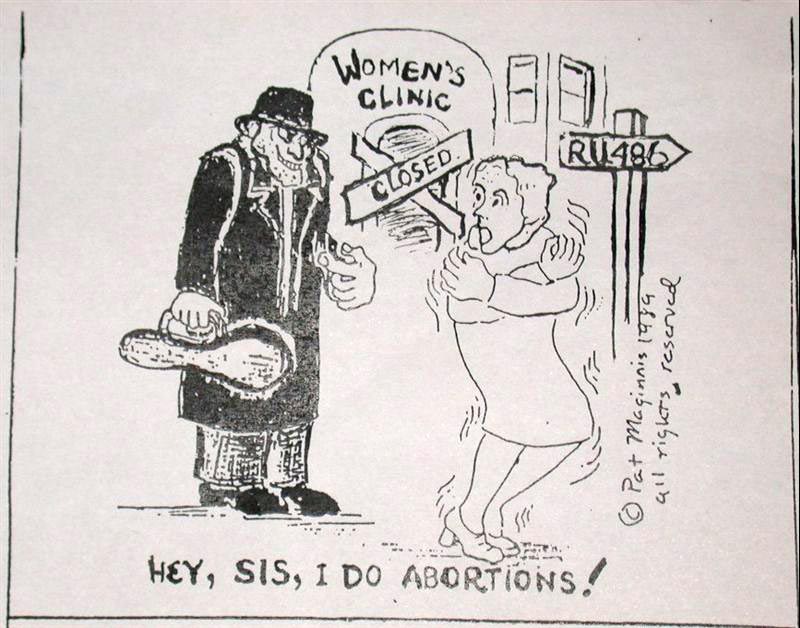
- The availability of RU-486 across the US maintains a woman’s privacy concerning their reproduction while remaining relatively free from judgment.
- Both the low cost and widespread availability of RU-486 have freed women from the burden of traveling long distances to find a physician that would perform a surgical abortion which prevented financial difficulties.
- Perhaps most importantly, supporters see RU-486 and its availability as a major step in empowering women with the right to make decisions about their own reproduction and welfare.
In opposition to RU-486:
- Those who are opposed to RU-486 see the drug as a “death pill” which further emphasizes their belief that life begins with conception.

- Critics of RU-486 worry that the pill makes abortion too easy, too accessible and that it could potentially used as birth control method rather than a last resort.
- Those against RU-486 see the pill as a human pesticide and seek to preserve the sanctity of life by preventing its use and availability.

- RU-486 can have negative side effects including uterine contractions, light nausea, diarrhea and general discomfort of even pain. As a result, over half of all users in one case study needed aspirin or a painkiller when using RU-486.
- Critics of RU-486 have also seen the drug as provoking and almost justifying casual and irresponsible sex.
[Read more →]
Categories: RU-486
April 29th, 2008 · Comments Off on References
|What is RU-486? | The Discovery | The Chemistry |
|The Global Use | RU-486 in US Politics |
| Cultural Controversy in the US | References |
- Banwell, Suzanna S., & Paxman, John M. (1992). The Search for Meaning: RU 486 and the Law of Abortion. American Journal of Public Health, 82, 10, 1399-1406.
- Bass, Marie. (1998). Toward Coalition: The Reproductive Health Technologies Project. In Rickie Solinger (Ed.), Abortion Wars: A Half Century of Struggle, 1950 – 2000 (pp. 251 – 268). California: University of California Press.
- Brown, Steve. (2002) RU-486: A Safe and Effective Method of Abortion?. Retrieved April 23, 2008, from http://www.udel.edu/chemo/teaching/CHEM465/SitesF02/Prop39a/Introduction.html
- Cobb, Roger W., & Ross, Marc Howard. (1997). Conclusion: Agenda Denial – The Power of Competing Cultural Definitions. In Cobb & Ross (Eds.), Cultural Strategies of AgendaDenial: Avoidance, Attack and Redefinition (pp. 112-138). Lawrence, Kansas: University Press of Kansas.
- Grant, George. (1991). The Quick and the Dead. Illinois: Crossway Books.
- Herring, Mark Y. (2003). The Pro-Life/Choice Debate. Connecticut: Greenwood Press.
- Jackman, Jennifer L. (1997). Blue Smoke, Mirrors, and Mediators: The Symbolic Contest over RU 486. In Cobb & Ross (Eds.), Cultural Strategies of Agenda Denial: Avoidance, Attack and Redefinition (pp. 112-138). Lawrence, Kansas: University Press of Kansas.
- Kimball, John W. (2008) Kimball’s Biology Pages. Retrieved April 23, 2008, from http://users.erols.com/jkimball.ma.ultranet/BiologyPages/P/Progesterone.html
- Lader, Lawrence. (1991). RU 486: The Pill That Could End the Abortion Wars and Why American Women Don’t Have It. New York: Addison-Wesley Publishing Company, Inc.
- Solinger, Rickie. (1998). Abortion Wars: A Half Century of Struggle, 1950 – 2000. California: University of California Press.
- Jackman, Jennifer L. (1997). Blue Smoke, Mirrors, and Mediators: The Symbolic Contest over RU 486. In Cobb & Ross (Eds.), Cultural Strategies of Agenda Denial: Avoidance, Attack and Redefinition (pp. 112-138). Lawrence, Kansas: University Press of Kansas.
- (2008). Mifepristone. Retrieved April 30, 2008, from Wikipedia. Website: http://en.wikipedia.org/wiki/RU-486.
[Read more →]
Categories: RU-486
April 29th, 2008 · Comments Off on The Discovery and Creation of RU-486


 |What is RU-486? | The Discovery | The Chemistry |
|What is RU-486? | The Discovery | The Chemistry |
|The Global Use | RU-486 in US Politics |
| Cultural Controversy in the US | References |
RU-486 was truly a collaborative effort between a number of scientists and various pharmaceutical companies over an extended period of time. Below is a timeline outlining the progress and development of RU-486.
1932 – German scientists determine the chemical structure of steriods including estradiol, testosterone and progesterone which became the template for creating drugs which imitate the structure of sex hormones.


testosterone progesterone
1940s – Professor Russell E. Marker discovers that process by which sex hormones are synthesized leading to their mass production specifically to be used in drugs.

1962 – Dr. Gregory Pincus determines through a set of experiments with rats and mice that antiprogestins could “act on specific receptors, located mainly in the nuclei of cells in the uterus and stopping the growth of the egg” (Lader, 1991, p. 29). By this time, it was widely known that progesterone played a central role throughout a woman’s pregnancy as it assisted in preparing for implantation.
mice that antiprogestins could “act on specific receptors, located mainly in the nuclei of cells in the uterus and stopping the growth of the egg” (Lader, 1991, p. 29). By this time, it was widely known that progesterone played a central role throughout a woman’s pregnancy as it assisted in preparing for implantation.
1970 – Etienne-Emile Baulieu embarked on research regarding the progesterone receptors in Paris, France in the hopes of learning more about th e “lock and key” model that described the relationship between receptors (as locks) and sex hormones as well as steroids (as keys).
e “lock and key” model that described the relationship between receptors (as locks) and sex hormones as well as steroids (as keys).
1970s – Roussel Uclaf Company, led by Dr. George Teutsch, attempts to find an anti-cortisone compound and use progesterone throughout their research as it is quite similar to cortisone in its chemical structure (see below). Teutsch hoped to find “a molecule that would bind to and block the receptors without triggering the normal hormonal response” (Lader, 1991, p. 33).
1975 – Through the separate efforts of Teutsch and Baulieu, it was found that “the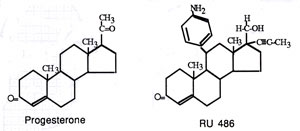 relationship between receptor concentration and hormone action […] might prevent progesterone-induced changes and consequently implantation” (Lader, 1991, p. 34). After testing over 900 compounds, anti-progesterone was found while looking for an anti-cortisone through a shotgun approach (Lader, 1991, p. 35).
relationship between receptor concentration and hormone action […] might prevent progesterone-induced changes and consequently implantation” (Lader, 1991, p. 34). After testing over 900 compounds, anti-progesterone was found while looking for an anti-cortisone through a shotgun approach (Lader, 1991, p. 35).
1980 – RU-486 was first synthesized by researchers at Roussel Uclaf.
1982– First successful human testing of RU-486 was completed.
[Read more →]
Categories: RU-486
April 29th, 2008 · Comments Off on The Global Use of RU-486
|What is RU-486? | The Discovery | The Chemistry |
|The Global Use | RU-486 in US Politics |
| Cultural Controversy in the US | References |
Countries that have approved and distribute RU-486:
France, United Kingdom, Sweden, Austria, Belgium, Denmark, Finland, Germany, Greece, Luxembourg, the Netherlands, Spain, Switzerland, Norway, Serbia, Montenegro, Latvia, Estonia, Albania, Hungary, Sweden, England, Wales, Scotland, Sweden, New Zealand, Israel, China, Taiwan, Vietnam, South Africa, Tunisia, India, Cuba, Russia, Ukraine, Azerbaijan, Belarus, Georgia, Uzbekistan, Moldova and Armenia

Countries that have not approved and do not distribute RU-486:
Ireland, Poland, Canada, Mexico and in any South American or Central American countries
Countries that have experienced strong resistance to the distribution of RU-486:
Australia, India
[Read more →]
Categories: RU-486
April 29th, 2008 · Comments Off on The Chemistry Behind RU-486
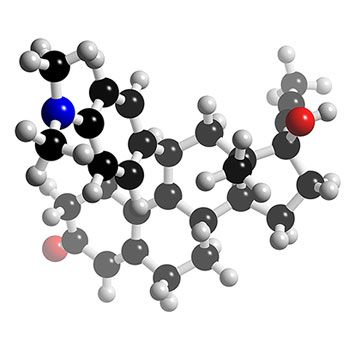 |What is RU-486? | The Discovery | The Chemistry |
|What is RU-486? | The Discovery | The Chemistry |
|The Global Use | RU-486 in US Politics |
| Cultural Controversy in the US | References |


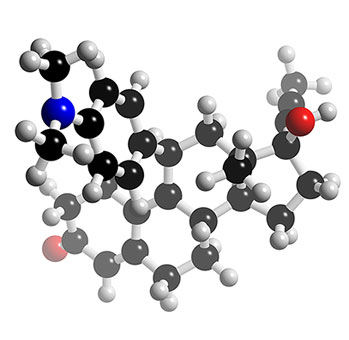
 RU-486, or mifepristone, is a “synthetic steroid related to progesterone […] that mimics the action of progesterone […and therefore…] blocks the action of progesterone” (Kimball, 2008). As a progesterone antagonist, RU-486 is a synthetic molecule that opposes the action of a natural molecule, in this case, progesterone. By attaching itself to progesterone receptors, RU-486 blocks progesterone from taking up a receptor and therefore the necessary proteins to initiate and sustain pregnancy are not made (Kimball, 2008). Finally, RU-486 dilates the cervix leading to contractions that assist in displacing and eventually, expelling the embryo. Below is a basic diagram of where RU-486 acts:
RU-486, or mifepristone, is a “synthetic steroid related to progesterone […] that mimics the action of progesterone […and therefore…] blocks the action of progesterone” (Kimball, 2008). As a progesterone antagonist, RU-486 is a synthetic molecule that opposes the action of a natural molecule, in this case, progesterone. By attaching itself to progesterone receptors, RU-486 blocks progesterone from taking up a receptor and therefore the necessary proteins to initiate and sustain pregnancy are not made (Kimball, 2008). Finally, RU-486 dilates the cervix leading to contractions that assist in displacing and eventually, expelling the embryo. Below is a basic diagram of where RU-486 acts:
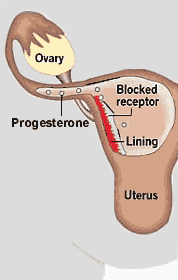
Molecular Formula: C29H35NO2
Chemical Structure:
[Read more →]
Categories: RU-486
|What is RU-486? | The Discovery | The Chemistry |
|The Global Use | RU-486 in US Politics |
| Cultural Controversy in the US | References |
RU-486 is a pill that is named after the first pharmaceutical company, Roussel Uclaf, to produce it. Known widely as “the abortion pill,” RU-486 can be taken orally up to eight weeks after conception to induce a woman’s menses and therefore abort the embryo. The integration and accessibility of RU-486 throughout human society has sparked debate and a strict divide between those who support and oppose its use. Below is a picture of a nurse holding RU-486.

[Read more →]
Categories: RU-486
April 29th, 2008 · Comments Off on The Politics of RU-486 in the United States
|What is RU-486? | The Discovery | The Chemistry |
|The Global Use | RU-486 in US Politics |
| Cultural Controversy in the US | References |
Political injunctions and partisan interests have become an overwhelmingly influential factor in limiting not only its availability but also its use throughout the United States as seen below.
Under Republican Presidential Administrations: 1981 – 1993

- A number of American organizations including the American College of Obstetricians, the National Organization for Women and the Planned Parenthood Federation pressured Roussel Uclaf to bring RU-486 to the American market with no success.

- The lack of initiative on the part of the Food and Drug Administration (FDA) to bring RU-486 to the US reflects the Republican interests of the current presidential administrations.
- Under funding towards further researching birth control and developing pro-choice programs severely undercuts progress in these areas.
- The resignation of a liberal-minded Supreme Court Justice leads to the seating of a conservative one during the Bush administration leaving many pro-choice supporters to fear the potential further restriction of a woman’s access to obtain an abortion.

- Under court rulings, physicians are not allowed to advise a woman to obtain an abortion and a mandatory waiting period is imposed upon minors requiring them to inform their parents with their intention to have an abortion.
- Anti-abortion violence begins to escalate against abortion clinics across the United States.
Under a Democratic Presidential Administration: 1993 – 2001

- Under President Clinton’s administration, the Bush’s ban on the importation of RU-486 was lifted.
- The Population Council was given drug rights to the drug and a series of clinical tests were performed to ensure its effectiveness and safety.
- The FDA approved RU-486 in 2000 after the Danco Group was selected to mass produce the drug throughout the US.
[Read more →]
Categories: RU-486

















